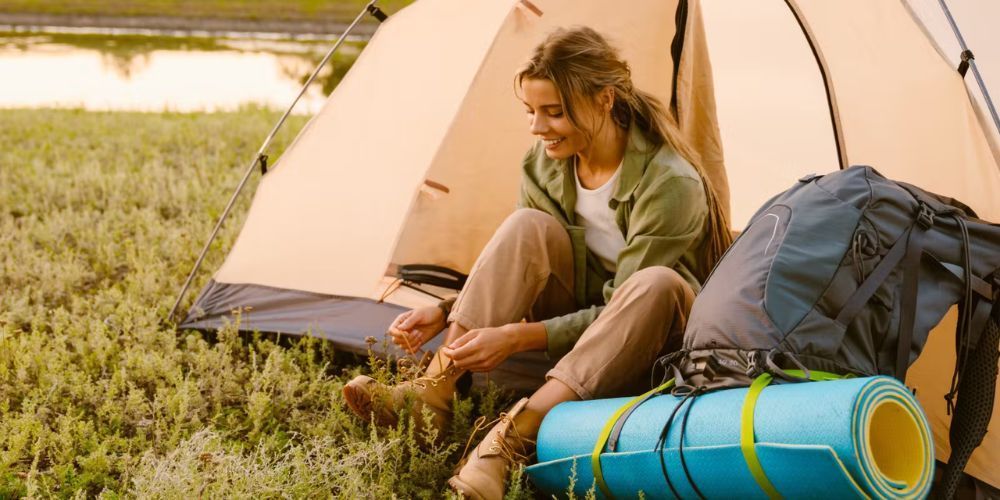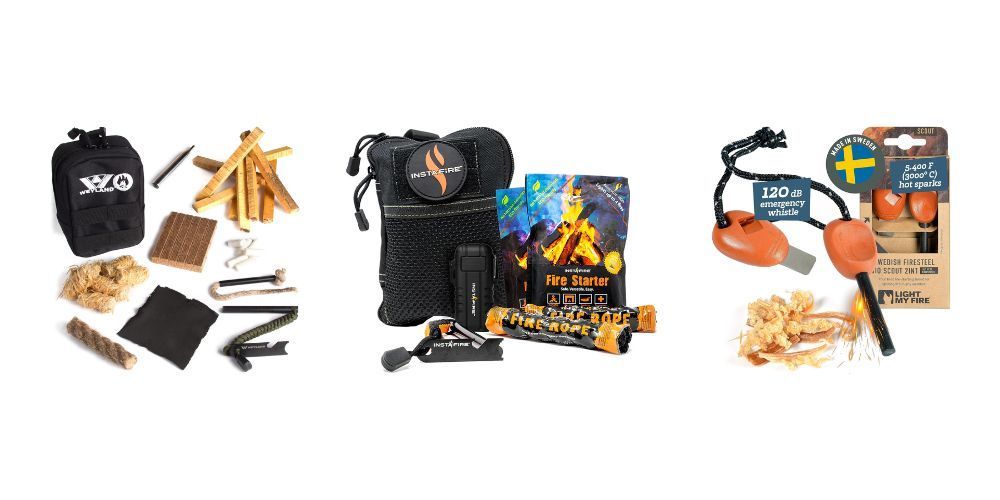Soccer Gear for Cold Weather: Stay Warm on the Field with Winter Apparel and Accessories
September 3, 2024
Playing soccer in cold weather presents a unique set of challenges, chief among them staying warm without compromising agility or performance. Ensuring that your gear provides both insulation and freedom of movement is crucial. Renowned brands like Nike and Under Armour have dedicated themselves to developing materials that strike this critical balance, focusing on moisture-wicking technology that keeps players dry while maintaining optimal body temperature.
After extensive research into user reviews and product specifications, it's clear that investing in high-quality winter soccer apparel can significantly enhance your playing experience. Picture yourself on a frosty morning game, layered efficiently, feeling the snug warmth from thermal base layers under your jersey, without any restriction in your stride. This guide will explore key clothing items designed to keep you comfortable and focused, starting with the essential garments every player should consider for optimal warmth on the field.
One essential piece of gear for cold-weather soccer is the
Nike Therma-FIT top, which provides lightweight warmth and freedom of movement during play. Additionally, Nike fleece hoodies and pullovers serve as cozy layers that can be quickly removed once players are warmed up, offering comfort and easy adaptability to changing temperatures.
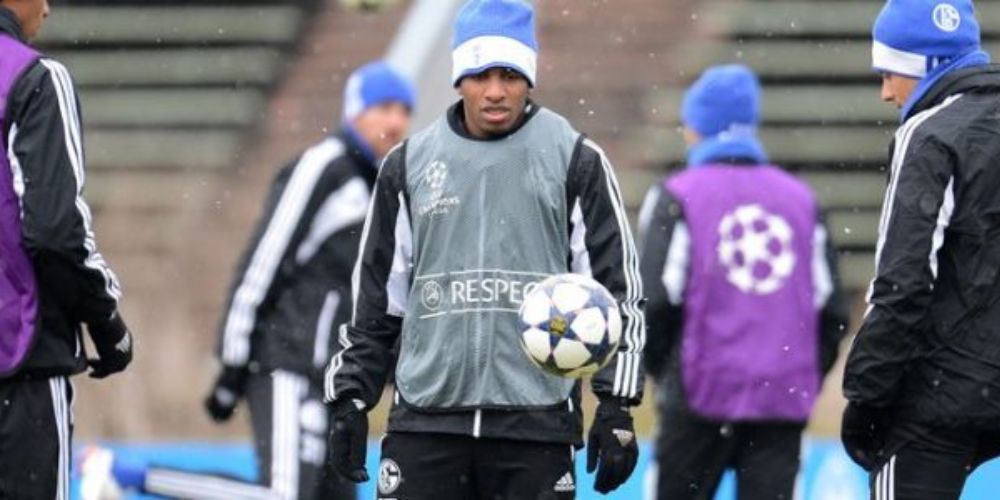
Essential Cold Weather Clothing for Soccer
When you're out on the soccer field on a frosty morning, the biting wind can make it hard to keep your focus. Having the proper clothing is like having a shield against the cold—a great advantage that can keep you warm and comfortable throughout the game. One of the most important pieces of clothing for cold weather soccer is a thermal long-sleeve shirt.
These shirts are specially designed to trap heat close to your body, keeping you warm even in the chilliest temperatures. A good thermal shirt should be snug but not tight, so it can keep you warm without hindering your movements. Look for options from trusted brands like Nike and Under Armour, as they often include moisture-wicking technology to keep players dry and insulated during play. This means that not only do these shirts keep you warm, but they also help manage sweat, keeping you dry and comfortable during intense matches.
Another essential piece of clothing for cold-weather soccer is thermal leggings. These are designed to provide an extra layer of warmth to your legs, preventing muscle stiffness and ensuring that you can move freely and easily on the field.
The key to staying warm while playing in cold weather is to layer up—when you add several thin layers rather than one thick layer, each layer traps heat more effectively. This technique ensures that you stay warm without feeling weighed down by bulky clothing. So when you're thinking about what to wear for a chilly game day, think layers!
Brands like Adidas and Puma also offer excellent options for thermal leggings designed specifically for athletes. Be sure to look for leggings that fit snugly and comfortably without being constricting. The material should also be moisture-wicking to keep sweat away from your skin.
These key garments—thermal long-sleeve shirts and leggings—are like your armor against the cold. They retain heat close to your body, manage moisture, and allow for ease of movement, ensuring that you stay warm and comfortable during those chilly games.
Now that we've covered some of the essential cold weather clothing for soccer, let's dive into additional gear that can elevate your comfort and performance on the field.
Thermal Base Layers and Insulated Gear
When the cold weather hits, it's crucial to have the right gear to keep yourself warm and ready for action on the soccer field. Thermal base layers are like the unsung heroes of your soccer outfit - they work silently but powerfully to keep you comfortable, no matter how chilly it gets. The key is finding the right material that will trap heat, but is also breathable so you don't overheat during intense physical activity.
Expanding on this idea, Merino wool is a star in this department. It’s known for being super soft, insulating even when wet, and naturally resisting odors. This means that not only will it keep you warm, but also dry and fresh throughout the game.
Here’s a little secret: synthetic materials can be just as good as Merino wool. They work hard at trapping heat too and some people find them even more breathable than wool.
What to Look For in Thermal Base Layers:
| Features | Why It's Important |
|---|---|
| Breathability | Key during physical activity; prevents feeling stuffy and sweaty |
| Moisture-wicking | Pulls sweat away from your skin so it doesn’t make you feel cold |
| Comfort | Soft fabric ensures comfort during the game; scratchy fabric can be distracting |
When looking for insulated pants and jackets, go for ones that offer extra protection against the cold while still allowing for easy movement. Brands like Adidas offer their ClimaHeat range, which are designed specifically to provide warmth without inhibiting performance on the soccer field.
Imagine this: You're out on that field, running with all your might, and diving in for that perfect slide tackle. With the right thermal base layers and insulated gear, you don't have to worry about feeling weighed down or restricted by bulky layers. Instead, you can focus on your game, knowing that you're comfortable and warm even in the coldest conditions.
Investing in high-quality thermal base layers made from Merino wool or synthetic materials can help regulate your body temperature and keep you dry, warm, and odor-free. And when you pair that with insulated pants and jackets designed for movement and warmth, you'll be ready to conquer the field no matter how cold it gets outside.
As essential as it is to prepare with suitable gear, understanding how layering contributes to warmth is equally pivotal. Let's explore the vital concept of layering and its impact on staying warm in cold weather.
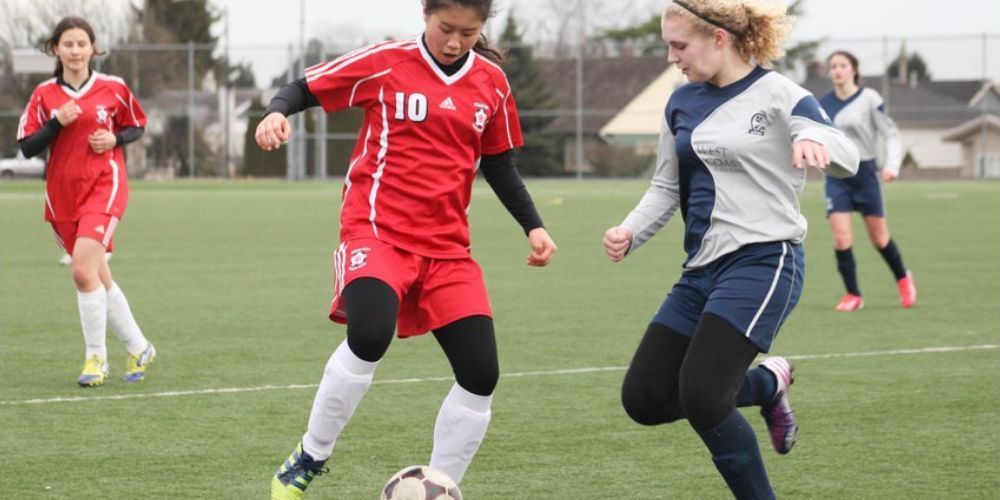
Importance of Layering for Warmth
Layering is not just about piling on clothes. It's about creating a system that allows your body to maintain a comfortable temperature throughout your game or practice. When you're out on the field, the temperature can fluctuate, and as you warm up during play, you'll need to remove layers to prevent overheating. This is where a thoughtfully constructed layering system comes into play, ensuring you remain cozy and at an optimal temperature regardless of the weather conditions.
The concept of layering involves wearing three main layers: base, middle, and outer. The base layer is like the foundation of a house—it's responsible for managing moisture, keeping your skin dry by wicking away sweat. Next, the middle layer, usually a fleece hoodie or thermal shirt, provides insulation by trapping warm air close to your body. Lastly, the outer layer, such as a jacket or vest with water-repellent properties, offers protection against wind and rain. By following this three-layer approach, you enable your body to manage heat and sweat efficiently.
This flexibility also allows you to adapt to changes in weather conditions during your game or training session. For example, if a cold breeze picks up suddenly or light rain starts falling, you can quickly put back on your outer layer without having to disrupt your play.
Benefits of Layering
Layering provides several key benefits:
- Temperature Regulation: By creating multiple layers with different functions, you gain greater control over your body's temperature and comfort during physical activity.
- Moisture Management: The use of moisture-wicking base layers allows sweat to be moved away from your skin, preventing the discomfort of wet clothing that can lead to chilling.
- Wind Protection: An outer layer with wind-resistant features acts as a barrier against cold winds, helping to maintain warmth during outdoor play in open fields.
- Flexibility: The ability to add or remove layers as needed lets you stay comfortable as your body temperature changes during play.
Layering isn't just about staying warm; it's a strategic approach to ensuring comfort and performance on the soccer field.
Now that we understand the importance and benefits of layering for warmth, let's explore how each layer works harmoniously to provide optimal thermal regulation.
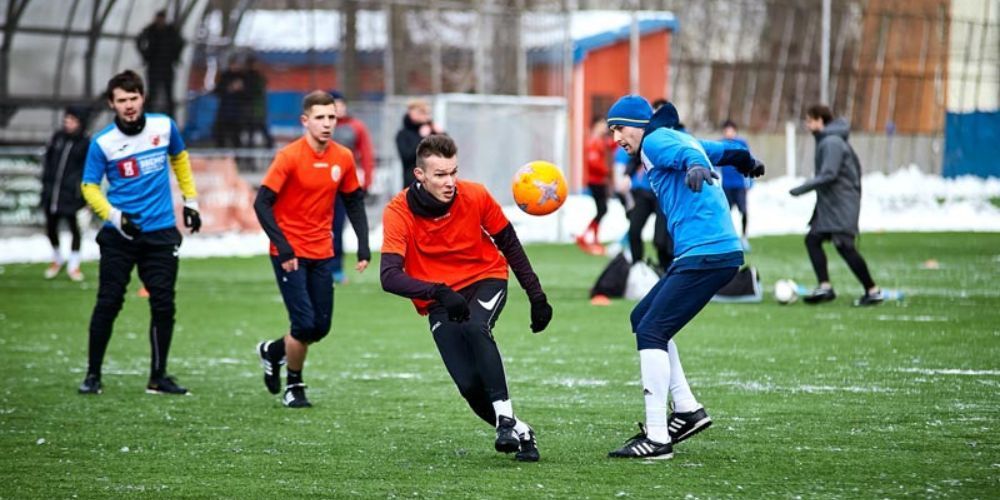
Best Accessories for Winter Soccer
When playing soccer in cold weather, it's crucial to protect yourself from the biting wind and dropping temperatures. Accessories like gloves, headwear, and face protection can make all the difference in keeping you warm and allowing you to perform at your best.
Gloves and Headwear
To keep your hands warm and maintain tactility, consider investing in thermal gloves such as those from the Nike HyperWarm series. These gloves are designed to provide warmth without compromising your ability to handle the ball effectively. Additionally, fleece-lined beanies or headbands that snugly fit under helmets can help retain heat and protect your ears from the cold. The adidas Alphaskin Headband is designed with a fleece interior lining that helps keep out moisture, while the Nike Lightweight Running Gloves are known for being lightweight, warm, and moisture-wicking.
In particular, these headbands and gloves prioritize comfort without sacrificing performance.
Face Protection
Protecting your face and neck from chilling winds is important. Products like the Nike Dri-FIT Strike Winter Warrior Snood not only shield your face but also provide breathability for clear communication during gameplay. By covering your face and neck, these special snoods excel at keeping you warm without hindering your ability to breathe comfortably or communicate with your teammates.
This is particularly vital in soccer where verbal communication is key to teamwork. The Nike Dri-FIT Strike Winter Warrior Snood offers both warmth and breathability, allowing you to focus on your game without compromising on comfort or safety.
With these essential accessories in your arsenal, you can maintain warmth, comfort, and dexterity while playing soccer even in the coldest conditions. By prioritizing protection for your extremities and face, you're setting yourself up for success on the pitch, no matter the weather.
Equipping yourself with these essential winter accessories ensures that you can focus on the game without letting cold weather dampen your performance. Now, let's shift our focus to selecting gear that can withstand various weather conditions on the field.
Choosing Weather-Resistant Gear
Playing soccer in cold weather can be tough, but having the right gear makes all the difference. When it comes to staying toasty and dry, it's crucial to choose clothing that is weather-resistant. This means clothing that will protect you from the elements like wind, rain, and snow.
Jackets and Pants: Look for jackets and pants with water-repellent or waterproof exteriors. These will help guard against unexpected rain or snow during your game. Brands like The North Face and Patagonia are known for their durable, high-performance outerwear specifically designed for extreme conditions.
When you're out on the field, there's no telling what kind of weather you might encounter. Having weather-resistant clothing not only keeps you comfortable but also allows you to focus on playing your best without worrying about getting wet and cold.
Imagine putting on a jacket with a water-repellent exterior before stepping onto a soccer field on a chilly, drizzly day. As others around you start feeling damp and chilled, you feel completely dry and insulated. It's a game-changer!
Choosing weather-resistant gear is like having an umbrella when it starts to rain - it's a small measure that can make a big difference in how comfortable you are during the game.
Look for clothing made with synthetic materials such as polyester or nylon, which are great at repelling moisture and keeping you warm even when wet.
In the next section, we'll explore additional factors to consider when choosing soccer gear for cold weather to ensure you stay warm, dry, and ready to perform at your best on the pitch.
Tips for Staying Warm During Play
When it comes to playing soccer in cold weather, staying warm is more than just comfort—it can directly impact your performance on the field. Here are some handy tips to help you stay comfortable and focused during your match.
Keep Active
Staying in motion is crucial to maintaining body heat. Incorporate dynamic warm-ups like jogging or jumping jacks before the game starts. These activities help increase blood flow and body temperature, preparing your muscles for the physical demands of the game. Not only does this help you physically, but it can also keep you mentally alert and ready to perform at your best.
Finding ways to keep moving before game time can make a significant difference in how your body responds to the cold temperatures, so don't underestimate the power of a good warm-up routine.
Pre-Warm Clothing
Consider warming up your gear before heading out by placing them near a heater or using heated gear bags. This small step can provide an initial boost of warmth, making the transition from warming up to kicking off much more comfortable.
When clothing is pre-warmed, it's less of a shock to put them on and head outside into the cold. It can feel like a little shield of warmth that helps you ease into the colder environment without affecting your focus on the game ahead.
Think of it like slipping into a hot bath after being in the cold all day—a much different feeling than getting into a cold bath! The same principle applies here; warming your gear can make a noticeable difference in how you feel when it's time to take the field.
Nutrition and Hydration
Maintaining proper nutrition and hydration is essential, as warm drinks like herbal teas can help raise core body temperature. Hydrating with warm beverages not only helps keep your body warm but also provides necessary fluids for peak performance throughout the game. Energy-rich snacks such as bananas or energy bars help sustain warmth and energy levels during play.
It's important not to overlook the role that food and drink play in regulating your body temperature during cold-weather matches.
In cold weather, your body burns extra energy to stay warm, so consuming high-energy foods before and during the game can help maintain your internal temperature at a comfortable level. Just like fueling a fire to keep it going strong, proper nutrition keeps your body's internal furnace blazing, allowing you to perform at your best even in chilly conditions.
With these simple yet effective tips in mind, you'll be better equipped to stay warm and comfortable as you take on cold-weather soccer matches.
As you prepare for those brisk matches, keeping these strategies at the forefront of your preparations will not only keep you cozy but also give you an edge when facing off against opponents in wintry conditions.
What are the most important pieces of soccer gear for playing in cold weather?
The most important pieces of soccer gear for playing in cold weather include thermal base layers, insulated jackets, and gloves. Thermal base layers, such as long-sleeve compression shirts and leggings, are essential for retaining body heat while still allowing for full mobility. Insulated jackets, especially those designed for athletic activity, provide an extra layer of warmth without being too bulky. Additionally, gloves are crucial to keep your hands warm and maintain good ball control. Beanies or thermal headbands can also be important to prevent heat loss from your head, which is a common issue in cold weather.
How can I keep my feet warm while playing soccer in winter?
Keeping your feet warm while playing soccer in winter involves choosing the right socks and footwear. Start with thermal or wool socks that offer moisture-wicking properties to keep your feet dry and warm. Some players prefer wearing two pairs of socks for extra insulation. It’s also important to ensure your soccer cleats fit properly—tight enough to maintain good touch and control but with enough room to allow for thicker socks. Waterproofing your cleats or using cleat covers can help keep your feet dry in wet, snowy, or icy conditions.
What materials are best for soccer gear in cold weather?
The best materials for soccer gear in cold weather are those that provide insulation while also wicking away moisture to prevent sweat buildup. Synthetic fabrics like polyester and nylon are popular because they are lightweight, durable, and quick-drying. Fleece-lined gear offers excellent warmth without adding bulk, making it ideal for layering. Wool, particularly merino wool, is another great option for its natural moisture-wicking properties and ability to regulate temperature. Avoid cotton, as it retains moisture and can make you feel colder once wet. High-performance athletic wear often combines these materials to provide the best balance of warmth, comfort, and mobility.


